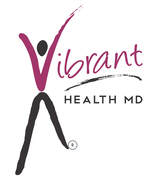Vitamin B3 (Niacinamide)
Function:
Niacinamide is needed to metabolize foodstuffs into energy. Niacinamide is converted into the coenzymes nicotinamide adenine dinucleotide (NAD) and NADP, which function in oxidation-reduction reactions essential for release of energy from carbohydrates, fats, and proteins. Niacin can also be synthesized by the body from tryptophan, although with low efficiency.
Deficiency Symptoms:
Clinical signs of early niacinamide deficiency include anorexia, muscular fatigue, indigestion, depression, insomnia, headaches, glossitis, and skin lesions. Severe deficiency may lead to pellagra, with dermatitis, dementia, diarrhea (the "3 D's" of pellagra), tremors and sore (black) tongue. Deficiencies of thiamin, riboflavin, and pyridoxine commonly accompany (or can cause) niacinamide deficiency.
Repletion Information:
Dietary sources of niacinamide are expressed as niacin equivalents, taking into account tryptophan's contribution. Richest sources (per serving) include:
The 1989 RDA for niacin is between 13-20 mg for adults. Niacinamide has no observed toxicity for intakes up to 3-9 gms daily, and is the preferred form of niacin supplementation. Niacin (nicotinic acid) may cause flushing (redness and itching of the skin around the face and neck) at doses above 50 mg. Other side effects are possible at higher doses of niacin, which should be used under supervision of a physician.
Niacinamide is needed to metabolize foodstuffs into energy. Niacinamide is converted into the coenzymes nicotinamide adenine dinucleotide (NAD) and NADP, which function in oxidation-reduction reactions essential for release of energy from carbohydrates, fats, and proteins. Niacin can also be synthesized by the body from tryptophan, although with low efficiency.
Deficiency Symptoms:
Clinical signs of early niacinamide deficiency include anorexia, muscular fatigue, indigestion, depression, insomnia, headaches, glossitis, and skin lesions. Severe deficiency may lead to pellagra, with dermatitis, dementia, diarrhea (the "3 D's" of pellagra), tremors and sore (black) tongue. Deficiencies of thiamin, riboflavin, and pyridoxine commonly accompany (or can cause) niacinamide deficiency.
Repletion Information:
Dietary sources of niacinamide are expressed as niacin equivalents, taking into account tryptophan's contribution. Richest sources (per serving) include:
- Nutritional Supplements
- Meats
- Enriched cereals
- Nutritional Yeasts
- Legumes including peanuts
- Potatoes
The 1989 RDA for niacin is between 13-20 mg for adults. Niacinamide has no observed toxicity for intakes up to 3-9 gms daily, and is the preferred form of niacin supplementation. Niacin (nicotinic acid) may cause flushing (redness and itching of the skin around the face and neck) at doses above 50 mg. Other side effects are possible at higher doses of niacin, which should be used under supervision of a physician.

